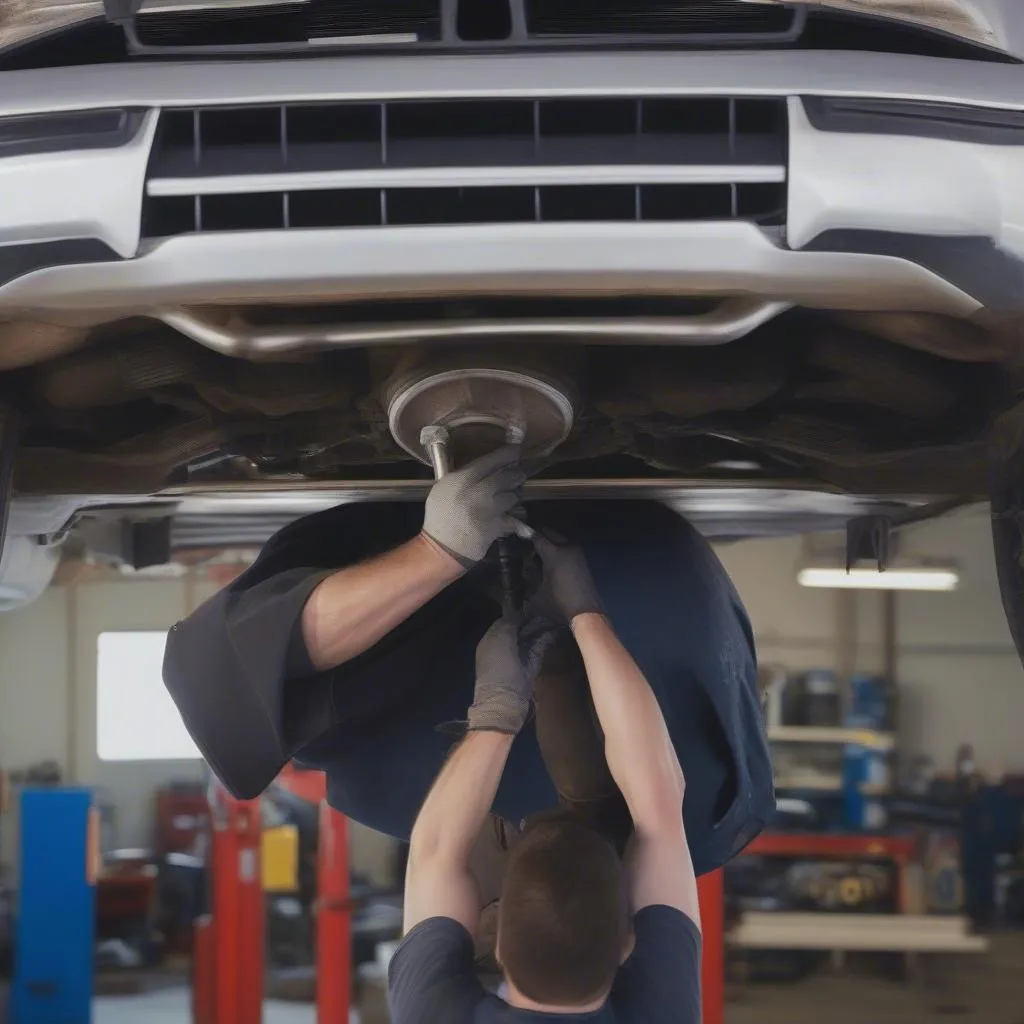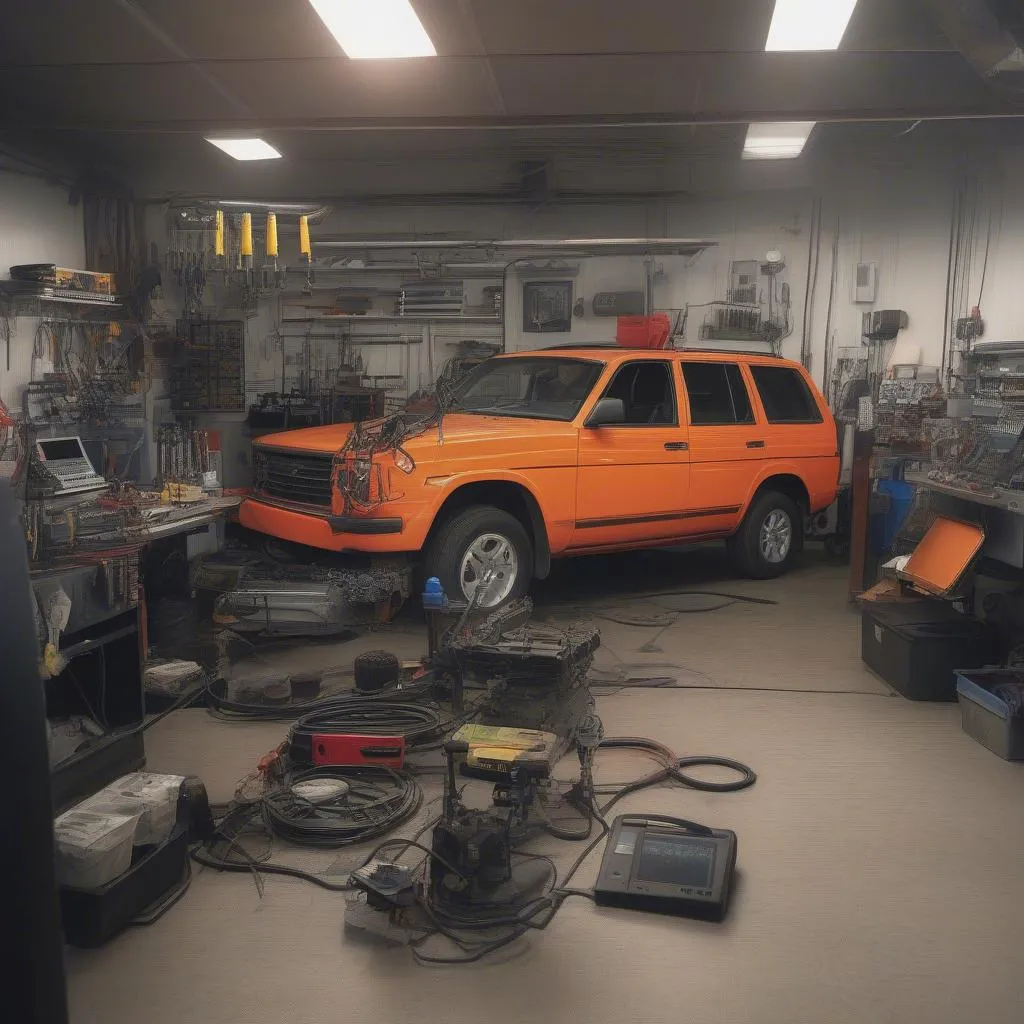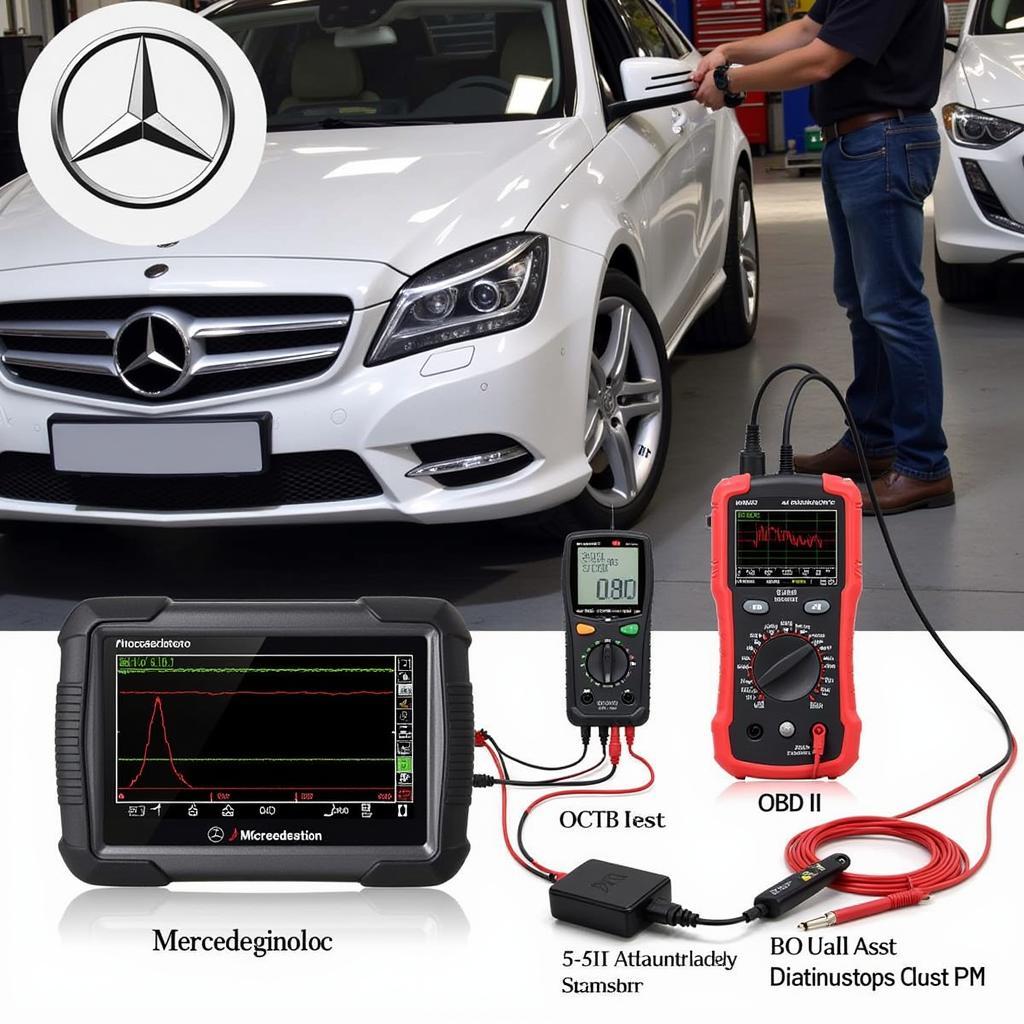Is your 1990 Mercedes giving you trouble? A malfunctioning catalytic converter might be the culprit. Catalytic converters play a crucial role in reducing harmful emissions, but when they fail, your car’s performance can suffer. This guide will walk you through the common reasons for catalytic converter failure in a 1990 Mercedes, symptoms to look out for, and potential solutions.
Understanding the Problem
What Causes Catalytic Converter Failure?
Before we dive into the fix, let’s understand why your 1990 Mercedes catalytic converter might be failing. Here are some common culprits:
- Engine Misfires: Unburnt fuel from engine misfires can overheat and damage the catalytic converter.
- Oil Leaks: Oil leaking into the exhaust system can contaminate the converter, reducing its effectiveness.
- Coolant Leaks: Similar to oil leaks, coolant leaks can damage the catalyst material inside the converter.
- Physical Damage: Impacts from road debris can crack or crush the converter.
Symptoms of a Failing Catalytic Converter
Identifying a failing catalytic converter early can save you headaches down the road. Keep an eye out for these warning signs:
- Reduced Engine Performance: You might notice a decrease in acceleration power or overall sluggishness.
- Rough Idle: The engine might run rough or shake when idling.
- Rotten Egg Smell: A strong sulfur-like odor from the exhaust is a telltale sign of a failing converter.
- Check Engine Light: The check engine light might illuminate, often accompanied by an oxygen sensor-related error code.
Diagnosing and Fixing the Issue
Diagnostic Tools and Equipment
To accurately diagnose a catalytic converter issue, you may need some basic tools:
- OBD-II Scanner: This tool reads engine error codes, which can pinpoint problems with the catalytic converter or related sensors. Some popular options include CARDIAGTECH’s [mention specific CARDIAGTECH OBD-II scanner model here, if any].
- Jack and Jack Stands: For safety, always use these when working under your vehicle.
- Wrench Set: Needed for removing exhaust components.
Repairing or Replacing the Catalytic Converter
Repairing a catalytic converter is often not feasible. In most cases, replacement is necessary. Here’s a simplified breakdown of the process:
- Diagnose: Use an OBD-II scanner to confirm the catalytic converter is the issue.
- Access: Safely lift the vehicle and locate the converter within the exhaust system.
- Removal: Disconnect the oxygen sensors and remove the bolts holding the converter in place.
- Installation: Install the new converter, ensuring proper alignment and gasket placement.
- Reconnect: Reattach the oxygen sensors and any disconnected exhaust components.
- Clear Codes: After installation, use the OBD-II scanner to clear any error codes.
Pro Tip: “Always refer to your vehicle’s specific repair manual for detailed instructions and torque specifications,” advises [fictitious expert name], author of [fictitious book title on Mercedes repair].
 Replacing a Catalytic Converter on a Mercedes
Replacing a Catalytic Converter on a Mercedes
Frequently Asked Questions
Q: Can I drive my Mercedes with a bad catalytic converter?
A: While technically possible for a short distance, it’s not recommended. Driving with a damaged converter can further damage your engine and lead to failing emissions tests.
Q: How long do catalytic converters last?
A: They are designed to last the lifespan of the vehicle, but factors like driving habits, maintenance, and underlying engine issues can impact their longevity.
Q: What’s the best way to prevent premature catalytic converter failure?
A: Regular vehicle maintenance, addressing engine misfires promptly, and monitoring for oil or coolant leaks can significantly extend the life of your catalytic converter.
 Mechanic Using Car Diagnostic Tool
Mechanic Using Car Diagnostic Tool
Conclusion
A faulty catalytic converter can be a frustrating issue for your 1990 Mercedes. By understanding the causes, recognizing the symptoms, and taking the proper steps for diagnosis and repair, you can get your Mercedes back on the road running smoothly and cleanly.
Remember, if you’re unsure about any step of the process, consulting a qualified mechanic is always a wise decision. They can provide expert advice and ensure the repair is performed correctly.


